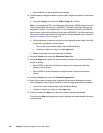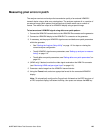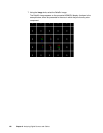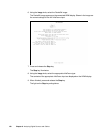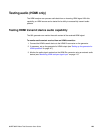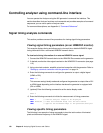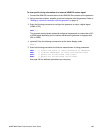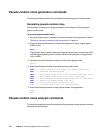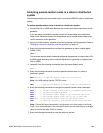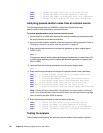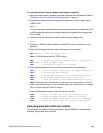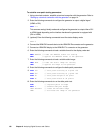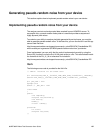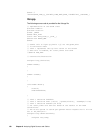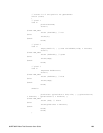132 Chapter 8 Analyzing Digital Sources and Cables
Pseudo-random noise generation commands
This section provides command line procedures for generating pseudo-random noise.
Generating pseudo-random noise
The following is an example of using commands to first configure and then generate
pseudo-random noise.
To generate pseudo-random noise:
1. Using a terminal emulator, establish a terminal connection with the generator. Refer to
“Setting up a terminal connection with the generator” on page 14.
2. Enter the following commands to configure the generator to output a digital signal
(HDMI or DVI):
SROP 2 4
This removes analog friendly mode and configures the generator to output either a DVI
or HDMI signal depending on the interface hardware the generator is equipped with
(DVI or HDMI).
3. (optional) Enter the following command to set the status display mode:
SROP 8
4. Enter the following commands to generate pseudo-random noise.
PNSF 0 // selects internal timing source for pseudo-random noise
PNST 1 // specifies QDI-BCM algorithm
PNSA 1 // sets pseudo random noise to be calculated each pixel clock
PNSM 0 // sets pseudo random noise test to run in auto mode
PNSP 0 // sets procedure for pseudo-random noise test to “continuous”
PNSG 1 // enables the pseudo-random noise test
PNGU // turns on the pseudo-random noise test
<CR> // a carriage return halts the continuous test
5. Enter the following commands to stop pseudo-random noise generation.
PNSG 0
PNGU
Pseudo-random noise analysis commands
This section provides command line procedures for generating pseudo-random noise and
analyzing the received data.



